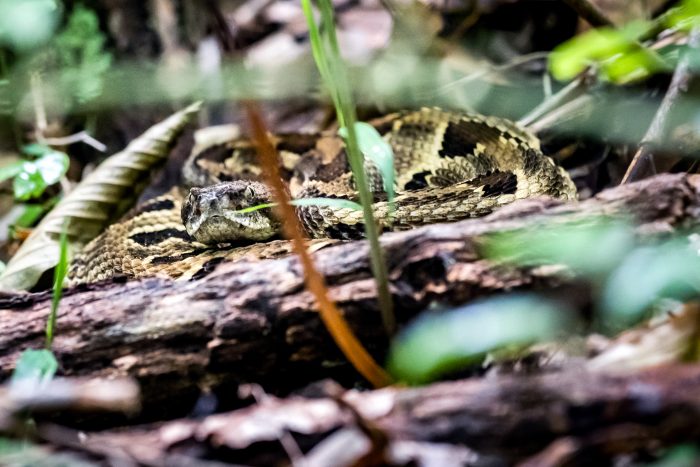You’ll probably hear them before you see them. Timber rattlesnakes can be found in parks, forests and wooded areas all over the state and that’s why West Virginia Division of Natural Resources biologists and Marshall University graduate students are monitoring the movement of these reptiles to help develop a method for moving them away from high-use recreation areas.
The project is part of a three-year long study in Kanawha and Coopers Rock state forests and will help researchers come up with a way to relocate rattlesnakes found in parks and other areas frequented by people without causing harm to the snake.
“We have three groups of snakes that we’re watching and what we learn is going to be very beneficial to our understanding of how movement affects rattlesnakes,” said Elizabeth Johnson, Marshall University graduate student. “So, if you’re at Kanawha or Coopers Rock state forests and see a rattlesnake, let park employees know and they will do their best to catch that snake.”
Understanding West Virginia’s state reptile
The timber rattlesnake is a large pit viper and the only rattlesnake species native to the Mountain State. Because the rattlesnake population is declining in the eastern United States, DNR biologists conducted surveys over the last few years to determine where snakes are located around the state and find out where they are most likely to cross paths with humans. That research prompted Marshall students to start the translocation study.
During the study’s first year, about 30 rattlesnakes were outfitted with radio transmitters and data collected by monitoring their movement was used to establish a home range. Over the next two years, two groups of rattlesnakes will be relocated in and outside those home ranges and then studied and compared to a control group. The goal is to see if snakes, removed from their home range, will return and if relocation can harm them in any way.
Rattlesnakes play an important role in the ecosystem
Rattlesnakes are vulnerable to being killed by people who see them as dangerous pests, but they’re mostly misunderstood. While rattlesnakes are often vilified, they are important predators and control rodent populations that spread disease.
“Every snake you see in your yard, in the woods or in a park fills a role in our ecosystem,” Johnson said. “I know a lot of people are afraid of snakes, but I promise they don’t want to hurt you or your family. If you see a rattlesnake, it’s best to just leave them alone.”
To learn more about the timber rattlesnake and other wildlife research projects conducted by the DNR, visit www.wvdnr.gov.

